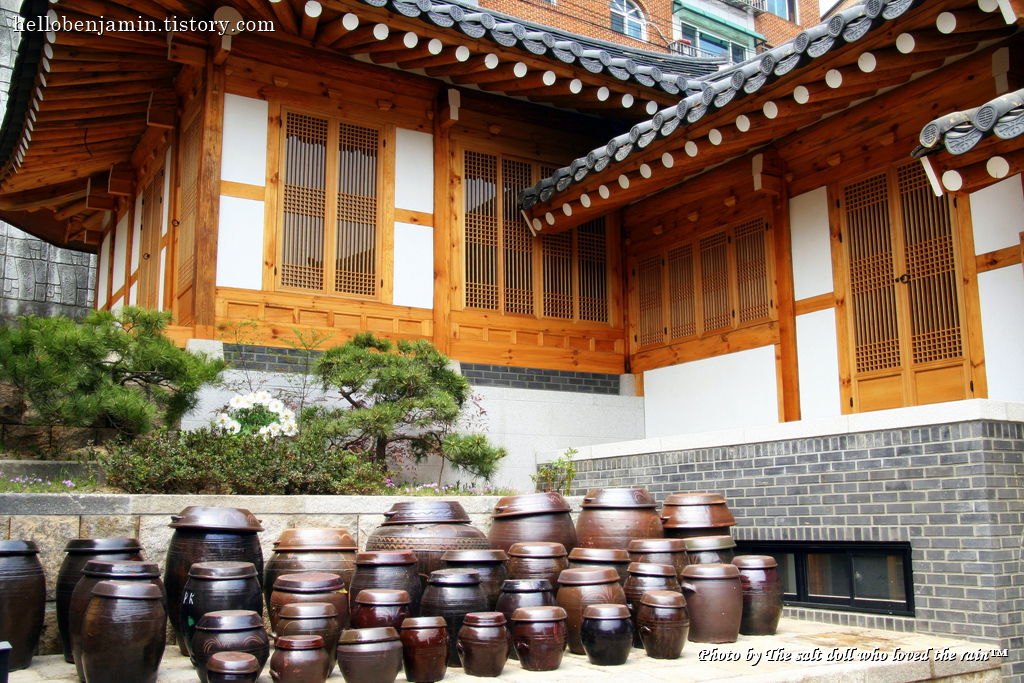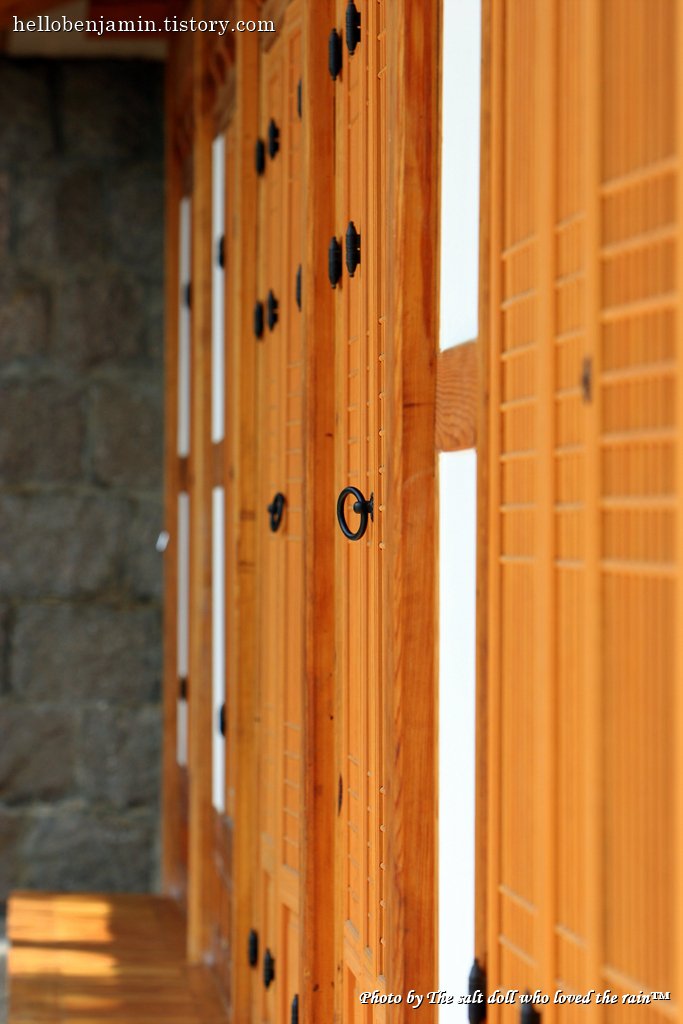A hanok (한옥, name in South Korea) is a traditional Korean house. Hanok was first designed and built in the 14th century during the Joseon dynasty.
Korean architecture considers the positioning of the house in relation to its surroundings, with thought given to the land and seasons. The interior of the house is also planned accordingly. This principle is called baesanimsu (배산임수, 背山臨水), meaning that the ideal house is built with a mountain in the back and a river in the front. Hanok shapes differ by region. In the cold northern regions of Korea, hanok are built in a square with a courtyard in the middle in order to retain heat better. In the south, hanok are more open and L-shaped.
One of the hallmarks of hanok is that no matter how small or poor the house is, it has a yard.




An integral part of hanok is the clay pot in the photo above, which we call a 'Jangdokdae'. Most of them are made of baking clay.
Some of them are buried completely in the ground so that only the entrance can open, and we keep the kimchi in the jar after soaking it. The jar is responsible for a kind of low-temperature aging.
The 'Jangdokdae' above ground is used for making and storing 'Jang'. Here, 'Jang' refers to soy sauce (Gan-Jang), soybean paste (Doen-Jang), and red pepper paste (Gochu-Jang).
https://en.wikipedia.org/wiki/Doenjang
Doenjang - Wikipedia
From Wikipedia, the free encyclopedia Korean fermented bean paste Doenjang[1] (Korean: 된장; "thick sauce") or soybean paste[1] is a type of fermented bean paste[2] made entirely of soybean and brine used in Korean cuisine. It is also a byproduct of sou
en.wikipedia.org
In Korean culture, Jangdokdae (Korean: 장독) or Jangttokttae is an outside space, most frequently a terrace, used to store or ferment food. Foods such as Kimchi, soybeans, grains, and bean and red pepper paste, are placed in Jangdok (or Onggi) earthenware jars which are then placed on the Jangdokdae.
Jangdok (장) means "crock" (for condiments and soy sauce) and dae (대) means "place", "support"... so jangdokdae (장독대) means "place for jangdok(s)". The jars are called hangari (항아리) or onggi (옹기).
This place is commonly found directly near traditional Korean houses, more precisely near the kitchen. Sunshine and ventilation are key aspects in the location choice so that foods can be preserved and kept fresh. Well-preserved ingredients may stay for several years in the jars.
The similar terraces of royal palaces were called yeomgo (염) and were supervised by a court lady, called janggo mama (장고 마마).
https://en.wikipedia.org/wiki/Jangdokdae
Jangdokdae - Wikipedia
From Wikipedia, the free encyclopedia Jangdokdae, Korean garden exhibition, Berlin-Marzahn In Korean culture, Jangdokdae (Korean: 장독대) or Jangttokttae is an outside space, most frequently a terrace, used to store or ferment food. Foods such as Kimch
en.wikipedia.org
So, wherever you go, these jars are always present. Nowadays, they have gradually disappeared because most people buy and eat 'Jang'. Another use of the jar was to store kimchi, which is why most Koreans have a dedicated kimchi refrigerator in their homes. Therefore, kimchi is stored and used in a kimchi refrigerator.





Thank you for visiting my blog and reading the article.
- Camera : Canon EOS-20D
- Lens : Sigma EX 18-50 / f2.8
Canon EF 70-200L IS / f2.8
'Under Sky of Name Called the Sun' 카테고리의 다른 글
| Spring in the Hongneung Experimental Forest (홍릉숲의 봄) (0) | 2024.05.16 |
|---|---|
| Samcheong-dong (삼청동) (0) | 2024.05.12 |
| 이화동 소경 (Ihwa-dong's blind spot) (0) | 2022.09.28 |
| 삼일절 삼청동 소경 (The blindsight of Samcheong-dong on March 1st Movement) (0) | 2022.09.28 |
| 창덕궁의 겨울 소경 (Winter blind sight in Changdeokgung Palace) (0) | 2022.09.27 |